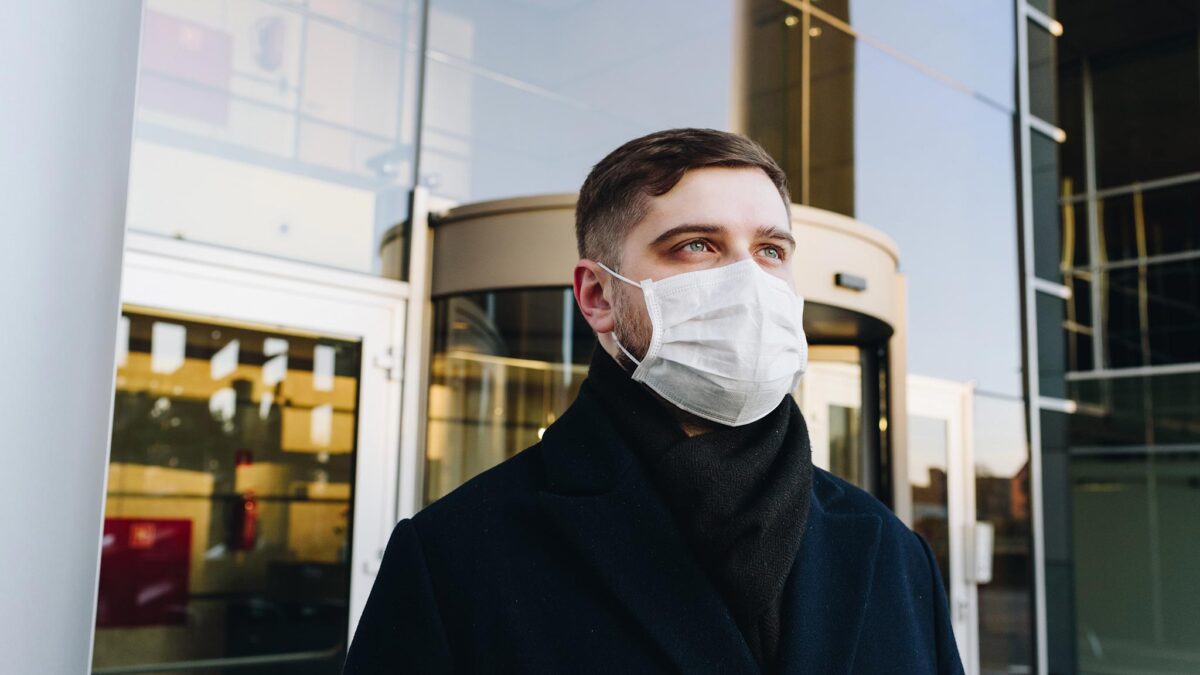Making Comparisons Between U. S. and International Models
Understanding the different uses and ratings for masks can be challenging, especially when a supply shortage requires one to look overseas for a supplier. Most masks are made in the United States, Europe, or China, and each region has different classifications of masks rated for use in a broad range of settings. This blog explores the most common types of masks and compares equivalent ratings between the U. S., Europe, and Asia.
Surgical Masks
Surgical masks are made from several layers of non-woven polypropylene and are designed primarily to protect others from the wearer by preventing the spread of infectious agents should the wearer cough, sneeze, or project spitules while speaking (1). They have no built-in filtering system because they are not air-tight. Typically, surgical masks are worn to prevent infection of a patient by doctors, attendants, and nurses during an operation. They offer extremely limited protection to the wearer from airborne pathogens such as influenza or coronavirus (2). However, the WHO and CDC advise surgical masks be worn by all persons infected with influenza, coronavirus, or other airborne pathogens, as they have proven effective at protecting those around them from transmission (1) (2). There are no established National Institute for Occupational Safety and Health (NIOSH) regulatory standards for surgical masks, but the Food and Drug Administration (FDA) maintains voluntary accepted standards, the highest level of which is ASTM F2100 Level 3 surgical mask. In Europe, the highest standard is EN 14683, whereas China uses only one standard, the YY 0469.
Respirator Masks
These masks are specially designed to filter small particles and prevent them from entering the respiratory tract where they can incite damage or cause infection (4). They are often seen both with a valve and without, but there is a critical distinction between them to be explored here. Valved models offer filtering only on inhalation, but not on exhalation; this makes breathing out easier and makes the mask more comfortable for long-term wear (4). Because these masks offer no protection to those around the wearer, they are best suited to construction sites or other environments where dust particles are of greater concern than microbes or other biological contaminants (5). Non-valved respirator masks, when properly fitted, are ideal for clinical settings, especially if there is the likelihood of exposure to biological contaminants (5). The World Health Organization (WHO) recommends a respirator mask when dealing with airborne pathogens or any pathogen that may become communicable during aerosol-generating procedures (1).
U. S. Respirator Mask Efficiency and Designations
Respirators are measured by their efficiency at filtering particles of 0.3 microns or larger (6). 0.3 microns is considered the most penetrating particle size (MPPS) due to the ability of particles of this size to penetrate deep into the lungs (4). Particles of this size and larger move in predictable ways and can therefore be effectively filtered. Particles smaller than 0.3 microns operate under a type of motion known as Brownian Motion, which means they do not travel unimpeded through the air (4). Their movement is erratic because they ricochet off atmospheric oxygen, nitrogen, ozone, and larger molecules. By way of reference, coronaviruses typically range in size between 0.8 and 0.1 microns in size (4). Brownian Motion generally ensures that a filter effective at filtering out particles 0.3 microns in size will also be fairly effective at filtering particles smaller than that.
The most commonly discussed respirator rating type in the United States is N95. This standard is managed by the NIOSH, a division of the Center for Disease Control (CDC). All respirator masks must be properly fitted to the face in order to work effectively; therefore, they don’t work well for children or on people with facial hair (5). Respirator masks are also not a good choice for individuals with preexisting respiratory ailments (1). The designation “N95” means the mask is (“N”) NOT resistant to oil (an “R” indicates some oil resistance and a “P” designation indicates total resistance to oils), and that it filters out 95% of particles as small as the previously discussed 0.3 micron standard (6).
Comparing American respirator models to those made elsewhere in the world can be confusing. The European Committee for Standardization maintains two different EN standards for masks: the Filtering Face Piece score (FFP1/FFP2/FFP3) and the P1/P2/P3 mask ratings. China uses a KN designation. Korea’s highest respirator standard is 1st Class, and Japan’s is DS2. Although the Chinese KN95 standard has been rated as equivalent to American N95 and EN FFP3 respirators, not all KN95 respirators have tested to the same efficiency as the Western models. The EN publishes a list of suspected fraudulent manufacturers that can be accessed here (3): https://www.eu-esf.org/covid-19/4513-covid-19-suspicious-certificates-for-ppe
Comparison Chart
The following chart is a convenient at-a-glance comparison between these different standards when tested to compare effectiveness at removing particles of 0.3 microns or larger (4) (5) (6).
Respirator Standard | Filter Capacity @ 0.3 microns | Primary Approved Use | Total Inward Air Leakage |
| FFP1 & P1 (EN) | 80% | ConstructionFood service | 20% |
| FFP2 & P2 (EN) 1st Class (Korea) | 94% | Healthcare settings Environments with fine dust or oil mist | 8% |
| N95 (US) KN95 (China) DS2 (Japan) | 95% | Healthcare settings Environments with fine dust or oil mist | 5% |
| N99 (US) FFP3 (EN) | 99% | Healthcare settings Environments with fine dust or oil mist | 2% |
| P3 (EN) | 99.95% | Healthcare settings Environments with fine dust or oil mist | 2% |
| N100 (US) | 99.97% | Healthcare settings Environments with fine dust or oil mist | 2% |
References
- WHO Filovirus PPE Guidelines: https://apps.who.int/iris/bitstream/handle/10665/251426/9789241549721-eng.pdf?sequence=1&ua=1
- OSHA Surgical Mask v. Respirator: https://www.osha.gov/Publications/OSHA3219.pdf
- Fraudulent Chinese Manufacturers of Respirators: https://www.eu-esf.org/covid-19/4513-covid-19-suspicious-certificates-for-ppe
- Detailed Respirator Mask Comparisons: https://fastlifehacks.com/n95-vs-ffp/#N95_vs_FFP3_FFP2
- Respirator Mask Use and Comparisons: http://www.safeticorp.com/data/train_img_normal/Respiratory_Protection.pdf
- Respirator Mask Use and Comparisons: https://www.cdc.gov/niosh/docs/2018-176/pdfs/2018-176.pdf?id=10.26616/NIOSHPUB2018176

